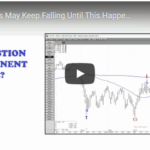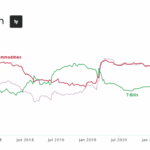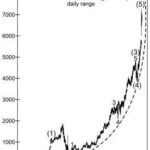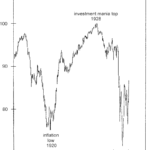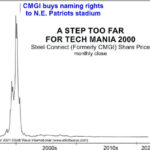“For certain, there will be countertrend rallies” By Elliott Wave International The stock market selloff from March into the May low was comprised of eight straight weeks of decline in the Dow Industrials. This was historic. The Dow Industrials have been around for 126 years and this was only the second time that the senior […]
Is the Correction Over Yet?
Last week Chris Ciovacco of Ciovacco Capital Management posted a video with his always thorough analysis considering whether this was the last hurrah before a major bear market or the final
test of support before the market resumed its uptrend. He entitled it “Trend Exhaustion or Eminent Plunge” . At around the 5:35 point, that video explains the Demark Studies “9-13” setup for
a reversal and how it plays into this week’s analysis. “9-13” signals on the downside are relatively rare but we got one in May. So, we need to keep an open mind to the possibility of a reversal to
the upside. Even though from a sentiment perspective or even a fundamental perspective it is very difficult to see how any good can be in the pipeline.
Is Bitcoin Headed to Zero?
During the 2008 meltdown gold initially lost value as speculators sold gold to cover margin calls. But it quickly recovered as investors realized that gold was the only asset that wasn’t simultaneously someone else’s liability. So the question arises, “Will Bitcoin turn out to be an Asset or a Liability”?
Predicting the Collapse of a “Parabolic Rise”
Sometimes an Elliott wave practitioner must adjust the wave count as a market’s action unfolds. After all, the Wave Principle is an “exercise in probability.” Having said that, the Wave Principle can sometimes offer amazingly “precise results.” And sometimes, the upward trajectory of a stock’s price seems to defy gravity. But “parabolic rises” are impossible to sustain.
The Market is Currently a “Mixed Bag”
In the following video, Chris Ciovacco of Ciovacco Capital Management looks at several market indicators and the recent rebound.
Historically Investors Become “Long-term Buyers” at Precisely the Wrong Time
Typically, unsophisticated investors tend to buy near tops and sell near bottoms… exactly the opposite of what they should be doing. And there is a very good psychological reason for this. They start out cautious and then as others begin making more and more money in the market the Fear of Missing Out (FOMO) takes over and eventually they get in to the market. They may make a little money and decide they are geniuses and commit more and more money. Eventually, everyone with available money has invested and there is no one left to buy so the market crashes. The unsophisticated investor holds on initially knowing the market will rebound as it “always” has. Then he holds on because he has “lost too much to get out now” and finally when he can’t stand it any longer he sells vowing never to invest again. This turns out to be the bottom, as there are no more people left to sell, and the market turns up. But “once burned, twice shy” so the unsophisticated investor once again refuses to buy until the market nears another top and “everyone is making money in the market”.
Why the “60 / 40 Balance” May Be Hazardous to Your Portfolio
Financial advisors have long advocated a mix of 60% stocks / 40% bonds to cushion portfolios from downturns in the stock market. The thinking is that stocks go up in the long-term, hence, that’s where investors should allocate the most. At the same time, advisors acknowledge that stock prices can sometimes go down so “less risky” bonds will provide at least some protection. The problem with this investment strategy is that bonds can go into bear markets too. Moreover, they can do so at the same time as stocks. Let’s review what happened during the Great Depression of the early 1930s.
Is the Correction Over?
After a fairly rapid correction in January 2022, the market has started to rebound. So does that mean it’s safe to jump back into the market? After all, we saw a worse crash in January 2020 followed by a rapid rebound to new highs. And even the 2018 correction was short-lived. So have market participants become accustomed to quick rebounds? Or is this just a brief counter-trend rally?
Has Crypto-Mania Finally Run Its Course?
Typically when a Company gets naming rights to a sports stadium or their President gets to ring the bell at the New York Stock Exchange that company is at the top of its game. Unfortunately, when you are at the top there is nowhere to go but down. In today’s article, we are going to look at tops, tech, crypto, and stadiums.
Why a Financial “Panic” May Be Just Around the Corner
Over the last few months, we’ve been warning that caution is the word of the day. The market was concerned that the FED’s September Statement would include provisions for tightening. That doesn’t seem to be their stance for the near future at least. But that doesn’t mean that the market is going to skyrocket either. As we can see in the following chart of the NYSE, the market definitely leveled off over the summer (despite the FED pumping $120 billion per month into the economy).
There’s one indicator that many investors overlook, and that’s the weekly change in “sight deposits” at the Swiss National Bank. This chart helps show when a financial panic could be building.

